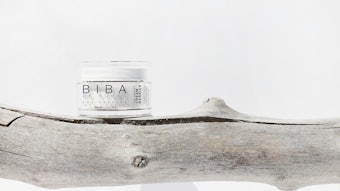After August 29, 2005, those who live on the Gulf Coast knew that their lives would never be the same. Whether this was due to the emotional baggage that resulted or to the continuing life stressors that have occurred in the aftermath, one year later, residents and business owners are struggling to make financial and emotional ends meet.
Round two?
Since Hurricane Katrina struck, much has changed in the affected towns, but even more has remained the same, causing those who decided to stick it out to wish for healing and closure. Unfortunately, as the 2006 hurricane season began on June 1, many felt like these will be a long time in coming. Threatened with another six predicted hurricanes, Gulf Coast locals are preparing for the worst, while hoping against hope that lightning won’t strike twice. The National Oceanic & Atmospheric Administration (NOAA) has predicted four to six potentially major hurricanes—Category 3 or higher—for the North Atlantic region.
However, the area is not ready—both physically and emotionally—for another storm. Chuck Kelly, owner of Chuck Kelly Salon and Spa in Gulfport, Mississippi—one of the hardest-hit coastal areas—doesn’t even want to think about it. “Even if we have a near miss, it will do tremendous damage to people’s psyches,” he says. Since the original article, which appeared in the December 2005 issue of Skin Inc. magazine, Kelly notes that much has stayed the same, with housing and staffing being the biggest issues. “Life is not a lot of fun right now,” he adds.
Although many cities in Alabama, Mississippi and Louisiana were devastated by Hurricane Katrina, none was more impacted than New Orleans due to breaches in the town’s levee system and its bowl-shaped topography. Because of the amount and extent of the damage, the city has so much to lose if another storm were to hit. Stanley Goldenberg, a meteorologist in NOAA’s hurricane research division, believes, “There’s no reason why New Orleans can’t get hit by another major hurricane in 2006.” Sam Brocato, New Orleans native and chairperson of the National Cosmetology Association (NCA) Disaster Relief Fund/Katrina efforts, disagrees. “A hurricane of this magnitude didn’t hit for so long that I don’t believe there will be another huge storm for a while,” he states. “If New Orleans gets hit with a healthy Category 2 storm, it will be contained, but it still will be such a blow to everyone.”
One year later: The French Quarter
Brocato is referring to the survivors who have remained in the area and have helped in the rebuilding efforts for a better New Orleans. Sandy Blum, co-owner of Shine Spa + Specialties and Spa Aria in the Hotel Monteleone in the French Quarter, was one of those survivors. When interviewed approximately six weeks after Hurricane Katrina hit, her outlook was positive. At the time, Blum said, “I feel that I am one of the chosen and blessed ones needed to rebuild this great city.” After a year’s time, she continues the fight, although she admits that it can be an exhausting and disheartening one.
“Since we last talked, I really felt that once we got back, the rehabilitation of the city would happen much quicker. So many things came into play,” she explains. “October through December, you probably could shoot a cannon in the front foyer of Shine—that’s how dead it was. There still are vendors that we owe money to from before Katrina, and we lost about $150,000 in revenue coming back, being closed and then reopening. We’re down 90% in business. It’s really a bad situation. The local and national governments haven’t been any help at all. We lost $11,000 in inventory that we had to repurchase because insurance didn’t cover it. Our insurance company told us that our electrical box literally would have had to have been torn off the pole in order for us to get any reimbursement—the product sitting in the heat for three months didn’t count.”
At the time of the interview, Blum confessed that unless a loan from the United States Small Business Administration (SBA) or other funds were to come through, Blum and Cindy Cocke, co-owner, would have to close Shine within 60 days. Luckily, things are looking up for her and her two businesses. In late May, Blum and Cocke signed loan paperwork from the SBA and are feeling a little relief. Also, due to May’s French Quarter Festival and the New Orleans Jazz and Heritage Festival, it turned out to be a good month. However, this is only a small battle won in the larger war of hardship in the area. Ironically, the French Quarter was mostly spared from the wrath of Katrina, but now is facing an equally damaging outlook due to the lack of tourism on which its small businesses thrived.
One year later: The Garden District
In the Garden District of New Orleans, however, business is good. According to Kim Dudek, owner of Belladonna Day Spa, her sales numbers are comparable to where they were last year, even with shortened spa hours and fewer business days, due to staffing issues. She can attribute this only to the lighter schedule creating a sense of urgency among the clientele. “Our prescheduled appointments are through the roof now,” adds Dudek.
Because of the spa’s location—a more residential area than that of Shine—she is able to count on more local spa-goers as they slowly return to their homes. “We have been very lucky,” says Dudek. However, she isn’t taking her good fortune for granted. By utilizing Belladonna’s massive retail area, she is focusing on helping the community. Whether it is creating and selling T-shirts that raise morale and funds or offering a “Be Prepared” booklet, now that the 2006 hurricane season has begun, Dudek certainly doesn’t shirk her civic duty. In fact, in her very limited free time, she is a dedicated volunteer for the Louisiana Society for the Prevention of Cruelty to Animals. This commitment involves the regular feeding of and searching for abandoned animals in the most unwelcoming parts of the city.
One year later: The rebuild
All who have lived through and are adapting to this tragedy agree on one thing: The rehabilitation efforts have only just begun. According to Blum, “People either think we are fine or we are ruined.” It is this thought process that threatens to slow momentum on relief efforts for the area. Money and help continue to be needed desperately. Those who operate the NCA Disaster Relief Fund/Katrina probably understand this the best.
So far, according to Gordon Miller, executive director of the NCA, the initiative has raised just less than $1 million for the spa and salon industries affected by Hurricane Katrina, the majority of which came from individual donations. Brocato explains that, due to the charity scandals in the wake of the disaster, people initially were having a difficult time believing that all the money was going to the affected individuals.
“Every single penny goes back to the professionals in the area,” Miller explains. “When we mail people a check, NCA takes the price of postage out of its own funds—we don’t take it out of the donations.” Despite major funding concerns about other charitable organizations, as well as the national government, Miller reports that people have been pleasantly surprised to see that their own industry has been the most reliable and the most helpful during their time of need. “We gave people emotional strength and encouragement to stay in this industry after the storm,” he says.
The NCA’s efforts continue. “We still have a fair amount of people needing aid. The biggest issue is that we don’t have enough funding, and that kind of stops things in their tracks. We need more money,” emphasizes Brocato.
When the organization believes that it has done all it can do to help with the Katrina recovery effort, it wants to extend the fundraising to filter into a natural disaster fund. “Those things happen all the time, and there is nothing for the victims,” explains Miller.
Although it can be difficult to believe that any good can come out of such a disaster, Miller personally feels fortunate for having worked at the NCA. “At the NCA office, we talk with every single person who has applied for funds—more than 800. It helped change the way I look at life. It makes me value the things I have more, and appreciate the friendships and family that I have. That has been a gift. It also keeps me motivated to continue doing this work and to do other work in my personal life. I’m a little more conscious about doing something for the homeless guy down the street than I was before.”
A new perspective
It is this mentality that causes human nature to win over Mother Nature. In the months and years to come during the massive rebuilding effort, those who remain to reconstruct the city will, in the end, gain a perspective that most can envy—thankfulness for what they have, as well as an appreciation for life. And those whose lives went virtually untouched by Hurricane Katrina can step in and help wherever possible—whether it be donating to relief efforts or traveling to the damaged areas to help rebuild. Please see How You Can Help for contact information of various charitable organizations. Ironically, a trip to the French Quarter—once the source of self-centered indulgence—can help New Orleans to rise again. “We want people to come and see that the French Quarter is fine. They can come and eat, and listen to great music like they used to. They can come and shop in the French Quarter. That’s the only way things are going to get better,” says Blum.










